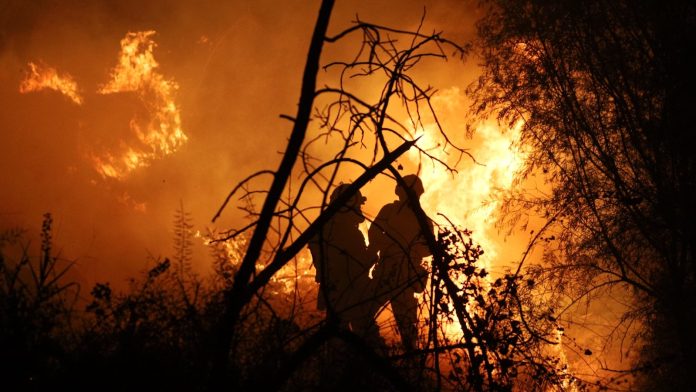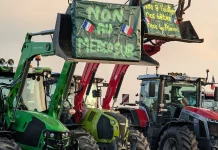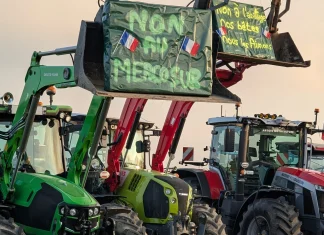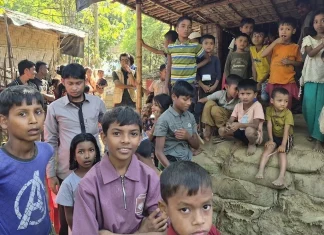Fires of Fury: Southern Europe Scorched as Wildfires Ravage Greece and Spain
Imagine waking to a sky thick with smoke, the air tinged with ash and the distant roar of flames tearing through parched woodlands. For thousands in southern Europe, this is not a scene played out in a wildfire documentary but the harsh reality of their daily lives as towering infernos rage across Greece and Spain.
Patras on the Brink: A City Fighting for Breath
In the sultry heat casting down hard on Greece, the city of Patras—its ancient streets and modern hum now shadowed—stands at the frontline of a desperate battle. Flames have crept perilously close to Greece’s third-largest urban heart, threatening homes, forests, and centuries-old heritage sites. Officials report that more than 20 wildfire fronts are ablaze across the nation, each fanned furiously by a relentless combination of searing heat and violent winds.
“This is not just a fire; it is a catastrophe that is reshaping our land before our eyes,” said Grigoris Alexopoulos, the mayor of West Achaia, the rugged Peloponnese region shielding Patras. Around 20 villages have been evacuated as the wildfire’s insatiable hunger pushes forward. “I spoke with families fleeing smoke and fear; it’s heartbreaking,” the mayor shared. “The very air is thick with despair.”
From dawn’s first light, more than 4,800 firefighters—backed by 33 airplanes—have raced against time and terrain, desperate to arrest the advancing fires. Yet even their tireless efforts have taken a toll; 15 firefighters have been hospitalized, some with burns and exhaustion, underscoring the grave human cost behind the headlines.
Patras’ skies are momentarily less menacing, but new fires have ignited near the archaeological site of Voudeni, cloaking the area in thick smoke. The devastating cycle repeats as nature and human resilience are pushed to their limits.
Southern Europe Sizzles: Spain’s Fiery Struggles and Tragedies
Beyond Greece’s rugged mountains and coastline, Spain endures its own infernal trial. The land of flamenco, sun-soaked plazas, and ancient olive groves is battling blistering wildfires that have forced thousands of people to flee their homes. In Castilla y León’s pastoral landscapes, a tragic fate befell a 35-year-old volunteer firefighter who was trapped and fatally burned while valiantly trying to carve firebreaks.
“He ran towards the flames when others walked away,” recounted Marta Delgado, a local resident in Nogarejas village. “His sacrifice reminds us of the courage and risks our firefighting volunteers face every day.”
Spain faces at least six large fires still raging out of control, and the regional government has evacuated over 5,000 residents to safety. The government’s Environment Minister, Sara Aagesen, offered a stark warning on national radio: “The intense virulence of many fires indicates a pattern of suspected arson, though investigations are ongoing. The fire’s fury cannot be underestimated.”
Meanwhile, the picturesque northwestern region of Galicia struggles with six active blazes consuming 10,000 hectares of verdant forest and farmland. Alfonso Rueda, Galicia’s regional leader, conceded the grim truth: “The weather isn’t on our side. These temperatures and winds make containment extraordinarily difficult.”
According to Spain’s Meteorological Agency (AEMET), today remains an “extreme” wildfire risk day, reminding us how climate fragility can cascade into human crises.
The Unyielding Climate: Southern Europe’s New Normal?
This wave of wildfires is no isolated incident. The European Forest Fire Information System reports that, in Greece alone, over 22,000 hectares of land have burned this year—an area comparable to 30,000 football fields charred by flame. Winds have howled through the Aegean and Peloponnese alike at speeds up to 88 km/h (55 mph), carrying embers like sparks on a fuse. Heatwaves baking the Mediterranean basin into a tinderbox are becoming alarmingly frequent, with temperatures soaring near 40 degrees Celsius (104°F) in western Greece.
As we watch these scenes, we must ask ourselves: Are these fires a consequence of climate change’s ruthless progress, human negligence, or something far darker such as arson? Perhaps the answer lies tangled in all these causes, swirls of smoke hiding broader global crises in environmental stewardship and disaster preparedness.
Hope from Above: Europe’s High-Tech Response
In response to mounting threats, Europe is turning to the skies for salvation. This very morning, a beacon of hope lifted off from the spaceport in Kourou, French Guiana: the Ariane 6 rocket carrying MetOp-SGA1, the continent’s next-generation weather satellite.
“The satellite offers earlier warnings for extreme weather events,” said Anne-Marie Dubois, a meteorologist with the European Organisation for the Exploitation of Meteorological Satellites (EUMETSAT). “Its incredibly precise instruments will help meteorologists improve forecasts of storms, heatwaves, and fires—saving lives and protecting livelihoods.”
Orbiting roughly 800 kilometers above Earth, MetOp-SGA1 will survey vital atmospheric data including temperatures, cloud cover, water vapor, and greenhouse gas concentrations. It represents Europe’s first major step into the US-led Joint Polar System, symbolizing international cooperation in an age where climate crises respect no borders.
The Human Flame Behind the Fire
While technology and emergency responses ramp up, the true story burns in the hearts of the people affected. Farmers losing crops, children choking on thick smoke, and firefighters facing harrowing conditions under unrelenting sun—all are portraits of courage and vulnerability intertwined.
Take Sofia, a schoolteacher in Patras, whose classroom is temporarily closed due to the poor air quality. “The children ask me: ‘Will our home burn?’ and there are no easy answers,” she said, her voice heavy with worry. Stories like hers unfold in many voices across the scorching landscapes of southern Europe.
As we witness these relentless fires, perhaps the greatest question we face is not how to stop the flames blazing today but how to change the story of tomorrow. How do we build resilience in communities, safeguard our natural heritage, and confront the climate realities driving these tragedies?
For readers watching from afar, this may seem a distant nightmare, but it is a vivid warning: the forces of nature and human action are entwined in a fragile dance, vulnerable to imbalance. It calls for reflection—on policy, on lifestyle, and on the deep connection we all share with this planet’s fragile breath.
Wildfires Across Southern Europe: A Grim Snapshot
- Greece: Over 20 active blazes; 4,850 firefighters and 33 planes deployed; 15 firefighters hospitalized; 22,000+ hectares burned in 2024.
- Spain: At least 6 large uncontrolled wildfires; more than 5,000 evacuated; 1 volunteer firefighter killed; significant fires in Castilla y León and Galicia.
- Weather conditions: Temperatures nearing 40°C, winds up to 88 km/h; drought dominates; “Extreme” wildfire risk labeled by AEMET.
- Technological response: Launch of MetOp-SGA1 satellite to enhance early warning systems for extreme weather events.
So, as the smoke settles—when and if it does—will we remember these fires as isolated calamities or as a clarion call? The choice, quite literally, lies in our hands.










